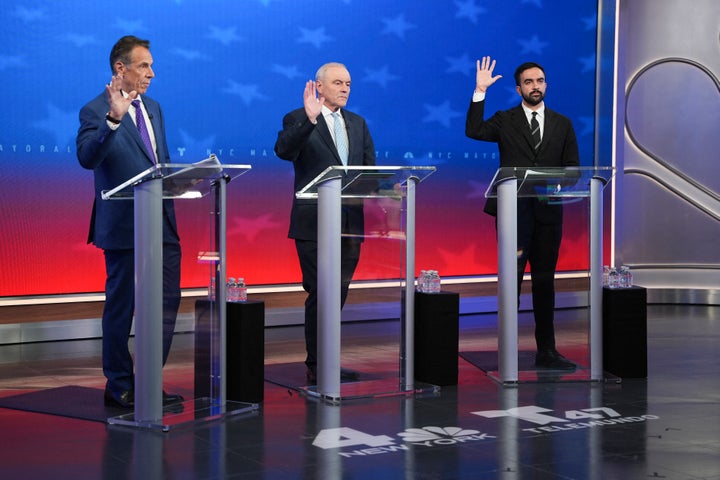Early voting in New York City this year far surpassed that of the last mayoral election as people turned out in droves for the closely watched race between Democratic nominee Zohran Mamdani, Independent candidate Andrew Cuomo and Republican nominee Curtis Sliwa.
According to the New York City Board of Elections, roughly 735,317 people had gone to the polls as of Sunday, the final day of early voting. That figure is over four times the number that participated in early voting during the last less-contested mayoral election in 2021.
This level of interest could put the election on par to see 1.5 million to 2 million voters participate in total, which would mark one of the highest turnout figures for a New York City mayoral race in years, experts told The Gothamist.
Young voters also had a major presence in the early vote, with voters between the ages of 18-44 comprising 42% of those who turned out, according to a New York Times analysis. They made up a slightly higher proportion of the electorate than they did in 2024, when voters between the ages of 18-44 comprised roughly 40% of people who turned out early, per The Times.
The strong showing from younger voters could bode well for Mamdani, who has an overwhelming advantage among these age groups compared to Cuomo, his closest competitor. Backing for Mamdani and Cuomo is more evenly split among voters between the ages of 45-64 and those who are 65 and older, according to a September NYT/Siena survey.
 (L-R) New York City mayoral candidates, Independent and former New York Gov. Andrew Cuomo, Republican nominee Curtis Sliwa and Democratic nominee Zohran Mamdani debate in New York on Oct. 16, 2025.
(L-R) New York City mayoral candidates, Independent and former New York Gov. Andrew Cuomo, Republican nominee Curtis Sliwa and Democratic nominee Zohran Mamdani debate in New York on Oct. 16, 2025.
Angelina Katsanis/Pool/AFP via Getty Images
Early voting data, though, doesn’t reveal who people supported and also may not be predictive of the demographic breakdown of the broader electorate.
ReportingWhat’sReal
Your SupportFuelsOur Mission
Your SupportFuelsOur Mission
Join HuffPost Today
This Election Day we’re cutting through the noise. With no billionaire influence or angles, we’re here to inform voters and help you make sense of the election day chaos. By becoming a member you help power this mission.
We remain committed to providing you with the unflinching, fact-based journalism everyone deserves.
Thank you again for your support along the way. We’re truly grateful for readers like you! Your initial support helped get us here and bolstered our newsroom, which kept us strong during uncertain times. Now as we continue, we need your help more than ever. .
We remain committed to providing you with the unflinching, fact-based journalism everyone deserves.
Thank you again for your support along the way. We’re truly grateful for readers like you! Your initial support helped get us here and bolstered our newsroom, which kept us strong during uncertain times. Now as we continue, we need your help more than ever. .
Already a member? Log in to hide these messages.
The focus on the race thus far, however, underscores the enthusiasm voters have expressed about the election, which will see New Yorkers select a candidate to succeed incumbent Mayor Eric Adams.
Mamdani, a state assemblymember and democratic socialist who’s focused his message on affordability, has drawn significant attention to the race after he defeated Cuomo earlier this year during the Democratic primary. Cuomo’s decision to run as an independent candidate after his loss has also kept the contest more competitive.
A RealClearPolitics polling average shows Mamdani with a sizable lead going into Tuesday’s race, putting him at 46.1% support, Cuomo at 31.8% support and Sliwa at 16.3% support.

